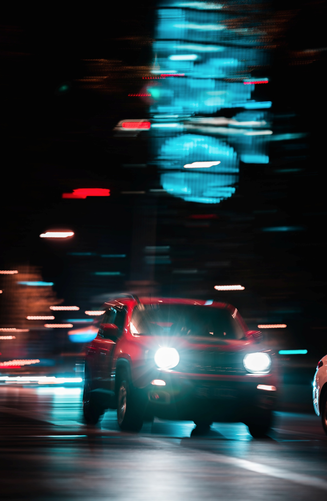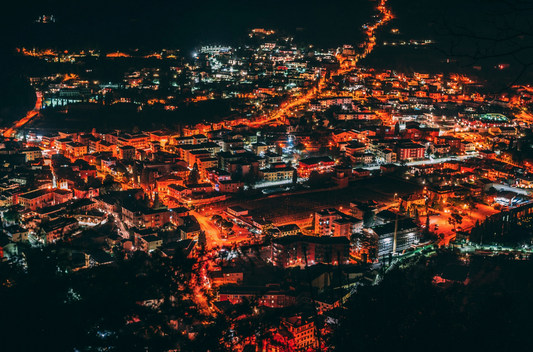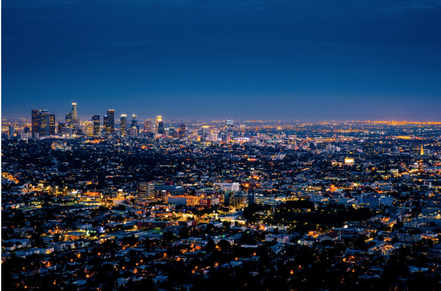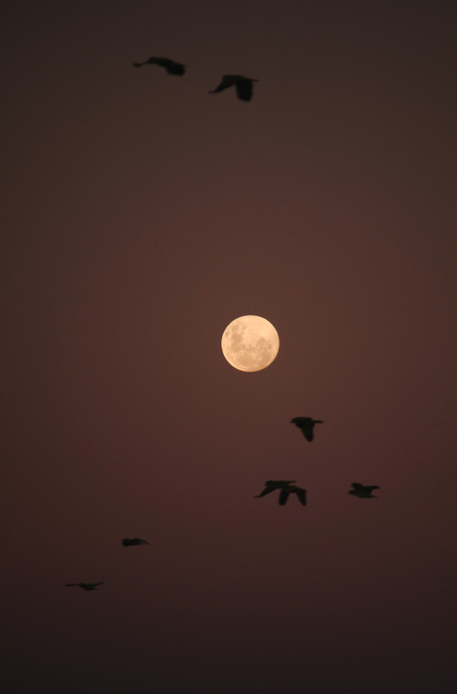|
The effects of nighttime lighting on animals have been known for hundreds of years when hunters and fishers would use the light of the flame, lamps, or gas-lit lighthouses to attract their prey to them. But in the past century alone, with artificial light increasing by two percent per year worldwide, the problem of light pollution has become too prevalent. All species (plants and animals, including humans) are genetically adapted to definitive biological clocks or circadian rhythms. These rhythms are regulated by cues from unchanging days, nights, and seasons, which dictate important life functions and natural behaviors of animals such as sleep-wake cycles, breeding, reproduction, hunting, predation, migration, etc. But, these cycles have been long disturbed by humans lighting up the night.  Photo by 力力摄影日记 on Unsplash Photo by 力力摄影日记 on Unsplash Most animals are diurnal, meaning they are awake during the daytime and asleep at night, like bees, songbirds, squirrels, and humans. Others are nocturnal that move about at night, e.g., bats, moths, cats, etc. Light pollution drastically affects both creatures but in different ways. Daytime species are becoming active at night time, thus missing out on sleep and rest, whereas intense lighting at night is interfering with the crucial life-sustaining activities of nocturnal species such as mating or hunting. Other adverse impacts include temporary blindness by car headlights, roadside accidents, loss of direction for migratory birds, and thus a predator-prey imbalance. Light pollution is one of the less frequently reported impacts of humans on the ecosystem and wildlife. Humans can avoid this issue by simply turning off the lights. Animals, particularly those that are site-specific, can’t help but suffer. This article is aimed to highlight how wildlife is affected by light pollution and provide solutions to minimize the effects on wildlife. Some general effects on wildlife: Light pollution affects both diurnal and nocturnal animals (birds, reptiles, and mammals), but the nocturnal creatures are particularly at risk. Dark skies are now hundreds and thousands of times brighter than they were a century ago! And 100 years isn’t enough for these animals to adapt to the ever-increasing brightness of the night sky. The glare of the artificial light confuses nocturnal creatures. The animals that are most affected by light pollution include insects, moths, bees, fireflies, Monarch butterflies, bats, owls, rodents, zebrafish, hummingbirds, seabirds, frogs, toads, sea turtles, Atlantic salmon, etc. Following are some general effects of light pollution on wildlife:
Impacts of light pollution on wildlife: Human alterations of light levels cause the loss of natural nightscapes and threatens an unacceptably large number of wildlife species, including insects, birds, amphibians, reptiles, and mammals, even humans. From baby sea turtles to seabirds, many animal species have become victims of anthropogenic light sources, including passing cars. Most species like frogs, bats, and moths suffer from severe physiological and behavioral changes; many others like owls take advantage of the situation and hunt more. All in all, the delicate ecological balance of the ecosystem has been disrupted by this artificial glare, which can have long-term consequences. “Light pollution can stall the recovery of the threatened species and interfere with their ability to complete long-distance migration, reduce breeding success, and chances of survival. Light pollution needs to be considered in conservation efforts, and it can be avoided through nature-friendly lighting design and management,” says Executive Secretary of Convention on Migratory Species. Impacts of light pollution on insects: “Like a moth to a flame,” the adage is true to its meaning. Many insects are attracted to light. But artificial human lighting is extremely detrimental to small insects. It affects their movements, flight, foraging, reproduction, migration, and even displaces them from their natural habitat. While some insects end up twirling around the light sources until they get exhausted or preyed upon, many others get killed by the excessively high temperature of the light sources. If a particular species doesn’t reproduce to make up for the loss, the declining number of natural pollinators would be detrimental for other species and our ecosystem as well. Impacts of light pollution on birds: Let’s have a bird’s eye view on the impacts of light pollution on birds... The golden aura of the cities has been detracting migratory birds, which rely heavily on cues from natural indicators (stars and moon) from their routes. Without enough natural lighting, birds can be hopelessly lost into a dangerous zone or fly until they’re exhausted. A million other birds die every year after colliding with the sparklingly bright buildings and towers during migration. Bright artificial light has also interfered with their ability to perceive cues from seasonal schedules, causing them to migrate either too early or too late and missing out on ideal climatic conditions for their life-sustaining activities. A multi-species study of the impacts of noise and light pollution on birds, funded by the U.S. National Science Foundation and published in Nature, concluded that light pollution affects the reproductive success of birds, surprisingly in a positive way; causing them to nest up to a month earlier than usual in grasslands and wetlands, and 18 days earlier in the forested environments. Birds use nesting cues from the length of the days, and light pollution tricks avian species into thinking that days are longer than usual. Scientists anticipate that an abundance of light confuses birds, leading to the hatching of the chicks even before their food (springtime peak) is available. This might be helping birds in the breeding respect, but it is also disrupting hormones and sleep cycles in birds, says Clinton Francis, study co-researcher and an ecologist at California Polytechnic State University. Light pollution is a threat for migratory seabirds as well. Young seabirds like puffins that follow moonlight to reach open oceans can accidentally end up in the luminous towns. Most of these puffins, naïve to the terrestrial life, are easy prey on land--they could get hit by a car after being drawn to car headlights (mistaken as the moon). Either way, they are less likely to survive at night. Impacts of light pollution on amphibians/reptiles: Just as natural light illuminates everywhere, the imperious impacts of artificial light are also widespread to each group of animals. Next to insects and birds suffering from the luminous trauma comes amphibians and reptiles. Although not well-documented, light pollution is known to affect the breeding success, feeding, and hiding behavior of nocturnal frogs. And then there are hatchlings of sea turtles! The poor hatchlings have followed the moon to guide their march towards the ocean for almost their entire history, until the bright artificial light from the beachside disoriented their route towards the human settlements, away from the ocean. This leads millions of baby turtles across the highway towards their death every year. Impacts of light pollution on mammals: Most mammals are nocturnal, and like other animal groups, they are also vulnerable to the effects of light pollution. Light has upset the predator-prey balance in the mammalian community. Many small mammals like mice avoid the artificially lit areas to avoid being preyed upon. On the other hand, predators like bats are attracted to brightly lit areas for easy prey. Artificial light is also known to affect the circadian rhythms of some mammals. Solution to light pollution: Turn off or dim out the lights: Although we live in the same world, animals experience disturbances in a profoundly different way than we do. Animals can see and hear better than us, so they are more sensitive to changes in noise and light levels. Light pollution is the most overlooked form of human disturbance that can be easily averted with few measures. And the good thing about mitigating this pollution is it doesn’t leave behind any residue. Here are a few things we can do to ensure the safety of wildlife and the sustenance of the ecosystem’s ecological balance in the long run;
AuthorNida Riaz is a freelance blogger based in Pakistan. She started writing about her passion for the environment when the world came to a stop in early 2020.
0 Comments
Leave a Reply. |
|
|
(833) CMS-LINE
(833) 267-5463 PO Box 13477 Mill Creek, Wa, 98082 © Conservation Made Simple. All rights reserved.
501(c)(3) Non-Profit, Tax ID#: 82-1646340 Copyright © 2021 Conservation Made Simple |



